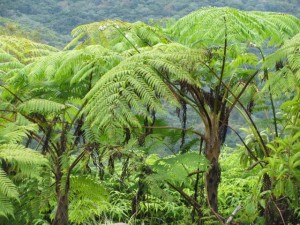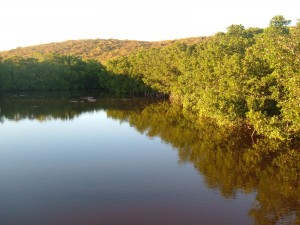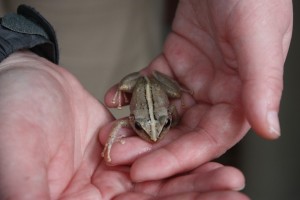I used the field of restoration ecology–and its constituent focus on land use changes–as a way to compare and contrast Vermont and Puerto Rican forests. Within the greater lens of forest biodiversity/ecology, this research angle compelled me to explore the forests’ historical contexts as a way of understanding their current and future trajectories. In order to decide what a forest should become in the future, after all, land managers must use their knowledge of their past and present conditions to inform their decisions. Ultimately, I focused on the site history of a single stand in the Jericho Research Forest, imagining and extrapolating its past and future conditions. – Rachel Garwin, Ecological Planning program
Connectivity conservation is the applied science of linking patches of habitat so that wildlife can roam from one habitat fragment to another to find food, water, shelter, and mates. Connecting patches can reduce the chance of extinction for a given population. Although the research aspect of connectivity conservation is lagging behind the application (simply because research takes time), conservationists widely accept and promote the effectiveness of making core habitat patches larger by linking them. Effective connectivity conservation is based on focal species or ecosystem processes, is founded on research and careful planning, and involves collaboration among stakeholders. Patches are linked with corridors, stepping stones, or swaths of relatively wild areas that are easier for focal species or processes to travel through than the surrounding human-dominated matrix. Although there is still much research to be done, many conservationists agree that connectivity conservation is a necessary and hopeful approach to stitching landscapes and wildlife populations back together. – Audrey Clark, Field Naturalist program


